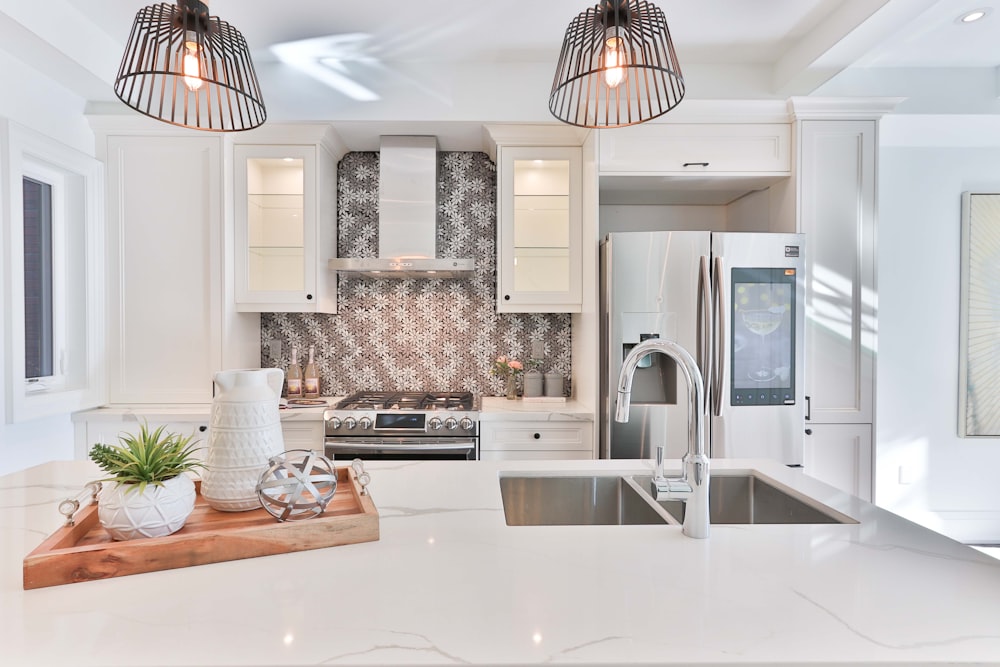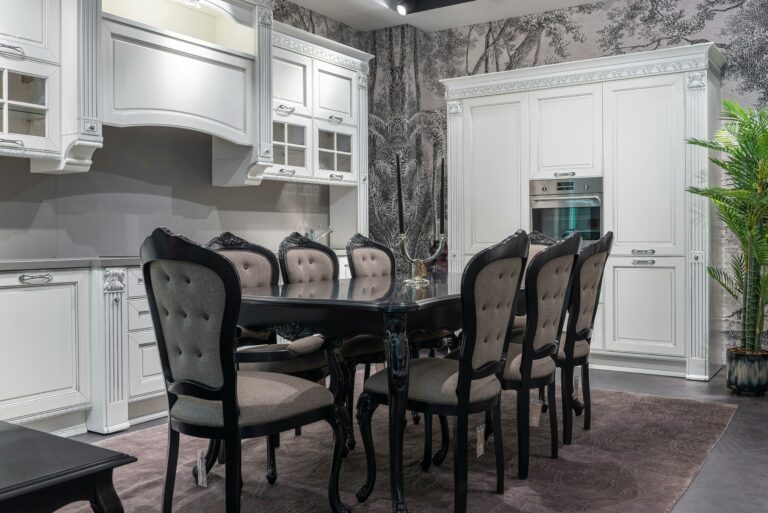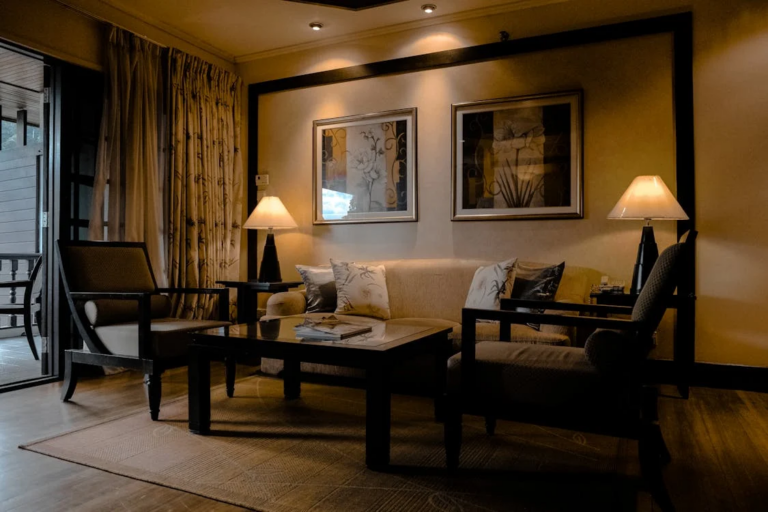The Power of Light: How Lighting Impacts Your Home Architecture
Lighting is not just a functional aspect of your home; it plays a vital role in enhancing the beauty and architecture of your living space. Whether it’s creating a cozy ambiance in your bedroom or highlighting architectural features in your living room, the right lighting can transform the atmosphere and create a welcoming and visually appealing environment.
In recent years, the lighting industry has undergone a significant transformation with the advent of LED technology. LED lighting has revolutionized the way we illuminate our homes, offering numerous advantages over traditional lighting options like incandescent and CFL bulbs. From energy efficiency to longevity and design versatility, LED lighting has quickly become the lighting solution of choice for many homeowners and designers.
Table of Contents
How Lighting Impacts Your Home Architecture

In this article, we will explore how lighting impacts your home architecture, the significance of lighting controls, the shift in lighting preferences, and the current market growth and potential. Let’s delve into the world of lighting and discover how it can truly enhance the architecture of your home.
LED Lighting: Growing Impact
LED lighting has come a long way since its inception, and its impact on the lighting industry continues to grow. With its numerous benefits, such as energy efficiency, durability, and versatility, it’s no surprise that LED lighting is projected to dominate the market in the coming years.
Projected Dominance by 2030
According to industry experts, LEDs are expected to make up a staggering 87% of lighting sources by 2030. This significant shift towards LED lighting can be attributed to several factors:
- Energy Efficiency: LED lights are renowned for their energy efficiency. Compared to traditional incandescent bulbs, LEDs consume much less power, resulting in reduced electricity bills. This makes them an attractive choice for both residential and commercial applications.
- Long Lifespan: LED lights have an impressive lifespan that surpasses traditional lighting options. They can last anywhere from 20,000 to 50,000 hours or even more, compared to the average lifespan of incandescent bulbs, which is typically around 1,000 hours. This longevity not only saves money on replacement costs but also reduces waste.
- Versatility: LEDs are highly versatile and can be used in a wide range of applications. Whether it’s for residential lighting, commercial lighting, or even outdoor lighting, LED technology offers endless possibilities. They come in various shapes, sizes, and colors, allowing for creative and customizable lighting solutions.
- Environmentally Friendly: LED lighting is known for its eco-friendly properties. Unlike traditional bulbs that contain harmful substances like mercury, LEDs are mercury-free and emit significantly less heat and carbon dioxide. This makes them a greener alternative, contributing to a more sustainable future.
Also Read : Revamping Your Bedroom Lighting : A Guide for Homeowners in 2024
Global LED Lighting Market Projection
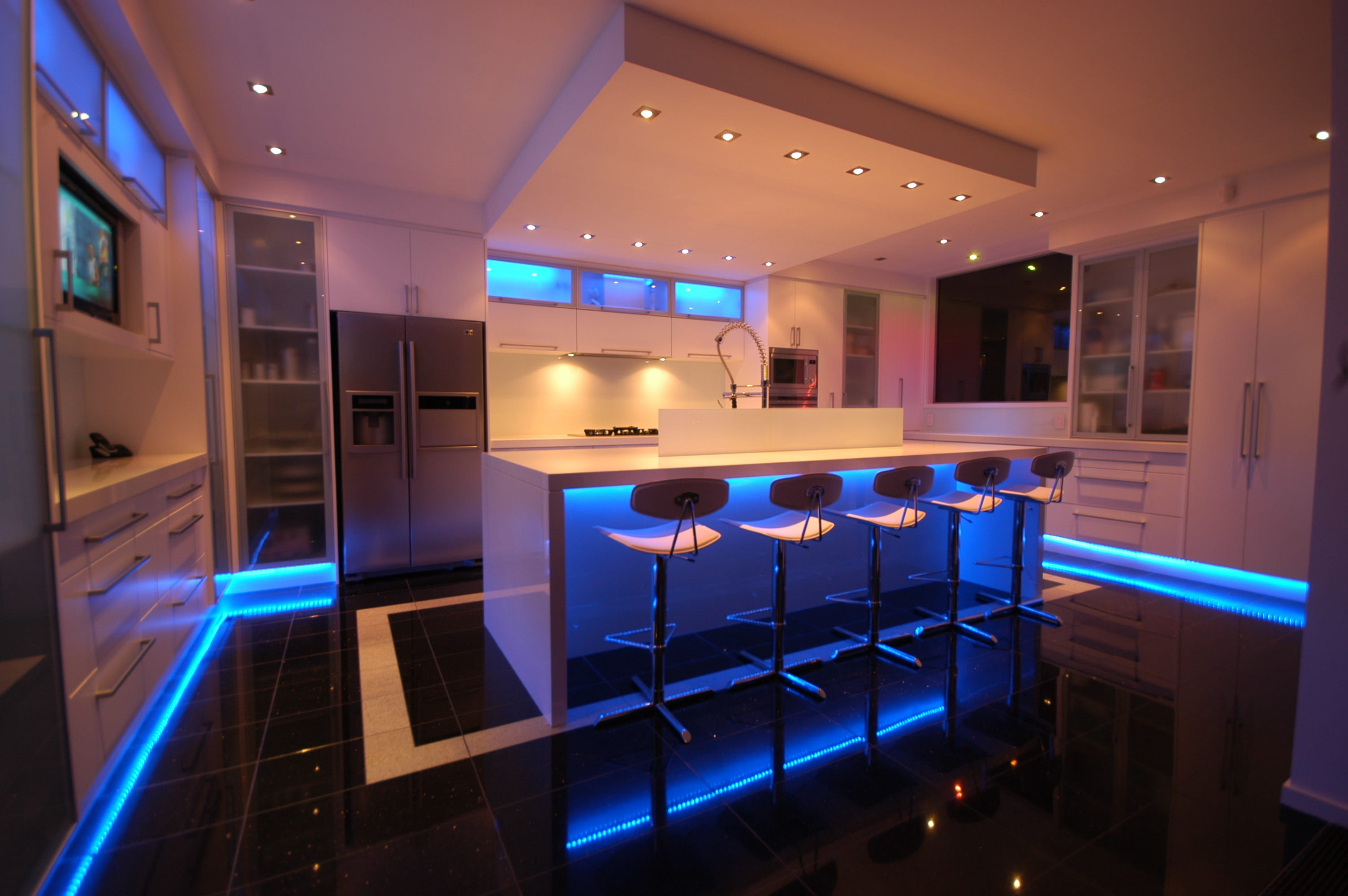
The global LED lighting market is projected to experience exponential growth in the coming years. According to market research, it is estimated to reach a staggering value of USD 127.47 billion by 2027. Several factors are driving this rapid growth:
- Rising Demand: As more businesses and consumers become aware of the advantages of LED lighting, the demand for LED products continues to soar. The increasing emphasis on energy efficiency and sustainable practices is pushing individuals and organizations to switch to LED lights.
- Government Initiatives: Governments around the world are implementing policies and regulations aimed at promoting energy-efficient lighting solutions. This includes providing incentives, tax credits, and rebates for LED lighting installations. These initiatives are propelling the growth of the LED lighting market.
- Technological Advancements: Ongoing advancements in LED technology are fueling market growth. Manufacturers are constantly innovating, developing more efficient, and durable LED products. This continuous improvement in LED technology is attracting more customers and expanding the market further.
The projected dominance of LED lighting and the exponential growth of the global LED lighting market highlight the growing impact this technology has on the industry. With its energy efficiency, longevity, versatility, and eco-friendly nature, LED lighting is undoubtedly shaping the future of lighting.
Significance of Lighting Controls
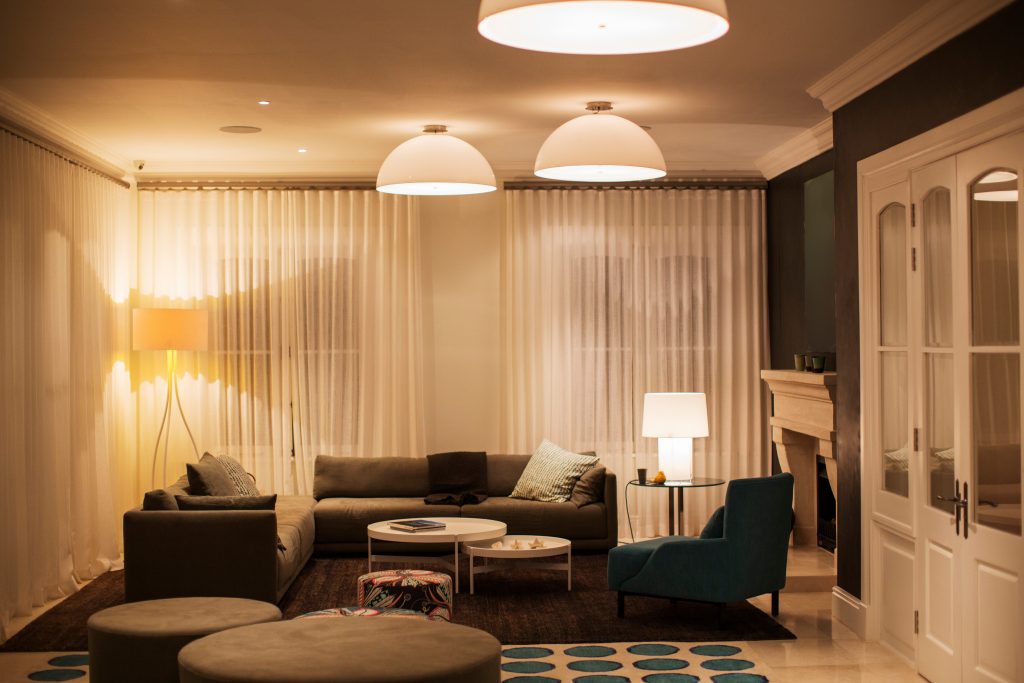
Lighting controls play a crucial role in enhancing the efficiency and effectiveness of lighting systems in various settings. Whether it’s a commercial building or a residential space, these controls offer numerous benefits that contribute to energy efficiency, cost savings, and overall comfort. In this section, we will explore the significance of lighting controls, focusing specifically on their usage in commercial buildings and the advantages they bring in terms of energy efficiency.
Usage in Commercial Buildings
Commercial buildings, such as offices, retail spaces, and educational institutions, heavily rely on lighting systems to create a comfortable and productive environment for occupants. Here are some key statistics that highlight the widespread use of lighting controls in commercial buildings:
- As of 2018, approximately 50% of commercial buildings in the United States were equipped with lighting controls[1]. This shows the growing recognition of the benefits they offer.
- The use of lighting controls in these buildings helps regulate and optimize lighting levels based on occupancy, time of day, and natural light availability. This not only ensures energy efficiency but also provides a more tailored lighting experience for occupants.
- Lighting controls in commercial buildings often incorporate features such as occupancy sensors, daylight harvesting, and scheduling functions. These advanced technologies enable the automation of lighting systems, reducing energy waste and maintenance costs.
Advantages for Energy Efficiency
The installation of lighting controls brings several advantages when it comes to energy efficiency, making them a valuable addition to any space. Here’s how lighting controls contribute to energy conservation and cost savings:
- Energy savings: By using lighting controls to adjust lighting levels based on occupancy and natural light, commercial buildings can significantly reduce energy consumption. This results in decreased utility bills and a smaller carbon footprint.
- Extended lamp life: Dimming controls, one of the key features of lighting controls, allow for the reduction of light output when full brightness is not required. This extends the lifespan of lamps, reducing the frequency of replacements and lowering maintenance costs.
- Enhanced controllability: Lighting controls offer the ability to easily manipulate lighting settings, allowing occupants to create the desired ambiance while minimizing energy wastage. This level of control empowers users to customize lighting based on task requirements and personal preferences.
- Compliance with energy codes and standards: Many countries and regions have established energy codes and standards that necessitate the use of lighting controls in commercial buildings. Adhering to these regulations not only ensures compliance but also demonstrates a commitment to energy efficiency and sustainability.
In conclusion, how lighting impacts your home architecture lighting controls are essential components of efficient and sustainable lighting systems. Their usage in commercial buildings is widespread, promoting energy conservation, cost savings, and occupant comfort. By incorporating advanced technologies and automation features, lighting controls offer a smart and practical solution for managing and optimizing lighting in various commercial settings.
Shift in Lighting Preferences
Lighting preferences have undergone a significant transformation in recent years, with people moving away from traditional options like compact fluorescent lamps (CFL bulbs) and embracing the rise of LED lighting. This shift can be attributed to a variety of factors, including advancements in technology, improved energy efficiency, and changing consumer attitudes towards sustainability and cost savings.
Declining Usage of CFL Bulbs
In the past, CFL bulbs were the go-to choice for many households. However, their popularity has declined steadily in recent years. According to data, the share of U.S. homes using CFL bulbs for indoor lighting fell from 32% in 2015 to 12% in 2020. This decline can be primarily attributed to the following reasons:
- Lesser energy efficiency: While CFL bulbs were initially hailed as an energy-efficient alternative to traditional incandescent bulbs, the advent of LED lighting surpassed them in terms of energy savings. LED bulbs are now more efficient and consume significantly less electricity than their CFL counterparts.
- Environmental concerns: CFL bulbs contain trace amounts of mercury, which can be harmful to the environment if not disposed of properly. This factor, coupled with the rise of eco-conscious consumer behavior, has contributed to the decline in CFL bulb usage.
- Less durability: CFL bulbs are more susceptible to breakage compared to LED bulbs. Their fragile nature and the release of mercury in case of breakage have made consumers opt for sturdier and safer lighting options.
Rise of LED Lighting
LED lighting has experienced an impressive surge in popularity over the past few years. Between 2015 and 2020, the percentage of households using LED lighting for indoor lighting has risen from 4% to 47%[2]. This dramatic increase can be attributed to several advantages offered by LED technology:
- Energy efficiency: LED bulbs are highly energy efficient, consuming up to 80% less electricity than traditional incandescent bulbs. This translates into significant cost savings for consumers over the long run.
- Long lifespan: LED bulbs have an exceptionally long lifespan, often lasting up to 25 times longer than incandescent bulbs and 5 times longer than CFL bulbs. This longevity not only reduces replacement costs but also minimizes environmental impact through reduced waste generation.
- Versatility and design: LED lighting comes in a wide range of shapes, sizes, and color temperatures, giving consumers more flexibility in choosing the right lighting for their specific needs. Additionally, LED technology allows for dimmable options, enabling users to create different moods and ambiances in their living spaces.
With these compelling benefits and increasing consumer awareness, it is no wonder that LED lighting has become the preferred choice for many households. The shift from CFL bulbs to LED lighting represents a significant milestone in lighting preferences, reflecting a desire for greater energy efficiency, environmental consciousness, and cost-effectiveness.
Also Read : The Power of Lighting : Enhancing Your Home’s Design in 2023
Market Growth and Potential
The lighting industry is experiencing substantial market growth and shows incredible potential for the future. As technology advances and consumer preferences evolve, the demand for innovative lighting solutions continues to rise. Let’s take a closer look at the factors driving market growth and the projections for the lighting industry.
Growing Market Volume
One of the primary drivers behind the market growth is the increasing volume of lighting products being sold worldwide. With the advent of LED technology and its widespread adoption, more and more consumers are opting for energy-efficient and long-lasting lighting solutions. LED lighting offers a wide range of benefits, including lower energy consumption, reduced maintenance costs, and enhanced durability.
As a result, the market volume for LED lighting products has been steadily on the rise. LED bulbs and fixtures are being used not only in residential settings but also in commercial spaces, hospitality establishments, and even outdoor lighting applications. The ever-growing demand for LED lighting solutions translates into a robust market with ample opportunities for manufacturers, retailers, and distributors.
Projections for the Lighting Industry
Industry experts and market analysts foresee a bright future for the lighting industry. Here are some projections that shed light on the potential growth opportunities:
- Market Value: The global lighting market is expected to reach a value of $XX billion by 2026, with a steady compound annual growth rate (CAGR) between XX% and XX% during the forecast period.
- LED Lighting Dominance: LED lighting is projected to dominate the market by 2030, surpassing all other lighting technologies. The cost-effectiveness, energy efficiency, and versatility of LED lighting make it the top choice for consumers across various sectors.
- Smart Lighting: The advent of smart lighting systems, which allow for remote control and automation, is expected to fuel further market growth. Smart lighting offers convenience, energy savings, and customizable lighting experiences, making it highly attractive to residential and commercial consumers.
These projections indicate a promising future for the lighting industry, driven by technological advancements, energy efficiency concerns, and evolving consumer preferences. With increasing awareness about the benefits of LED lighting and the growing demand for smart lighting solutions, manufacturers and stakeholders in the lighting industry have a vast market to tap into.
In conclusion, the market growth and potential in the lighting industry are significant and show no signs of slowing down. As LED lighting continues to dominate, smart lighting gains traction, and global demand for innovative lighting solutions increases, it’s clear that the lighting industry is poised for continued success.
Frequently Asked Questions
- What are the different types of lighting used in residential architecture?The different types of lighting used in residential architecture are ambient lighting, task lighting, accent lighting, and decorative lighting.
- How does lighting affect the overall aesthetics of a home’s architecture?Lighting plays a crucial role in enhancing the aesthetics of a home’s architecture by highlighting key design elements, creating a mood or ambiance, and adding depth and dimension to the space.
- What are the benefits of using natural lighting in residential architecture?Using natural lighting in residential architecture has several benefits, including energy efficiency, enhancing the connection with the surrounding environment, boosting mood and productivity, and reducing reliance on artificial lighting.
- How can lighting be used to make a small space appear larger?Strategic lighting techniques, such as using recessed downlights, wall sconces, and mirrors, can create an illusion of space and make a small area appear larger by enhancing brightness, eliminating shadows, and adding depth to the room.
- What are some popular lighting trends in modern residential architecture?Some popular lighting trends in modern residential architecture include the use of LED lighting for energy efficiency, incorporating smart lighting systems for convenience and control, and utilizing unique and statement lighting fixtures as focal points in the design.



